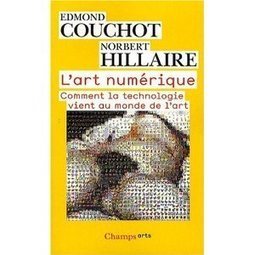Software has replaced a diverse array of physical, mechanical, and electronic technologies used before 21st century to create, store, distribute and interact with cultural artifacts. It has become our interface to the world, to others, to our memory and our imagination - a universal language through which the world speaks, and a universal engine on which the world runs. What electricity and combustion engine were to the early 20th century, software is to the early 21st century. Offering the the first theoretical and historical account of software for media authoring and its effects on the practice and the very concept of 'media,' the author of The Language of New Media (2001) develops his own theory for this rapidly-growing, always-changing field.
Via Jacques Urbanska, Monika Fleischmann



 Your new post is loading...
Your new post is loading...



![Novels as the Driving [Transmedia] Platform | Le BONHEUR comme indice d'épanouissement social et économique. | Scoop.it](https://img.scoop.it/jDNWaK7jyPwhjeHCFpr5hjl72eJkfbmt4t8yenImKBVvK0kTmF0xjctABnaLJIm9)









